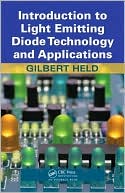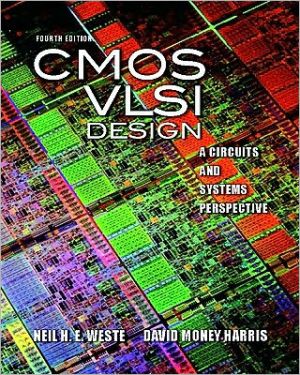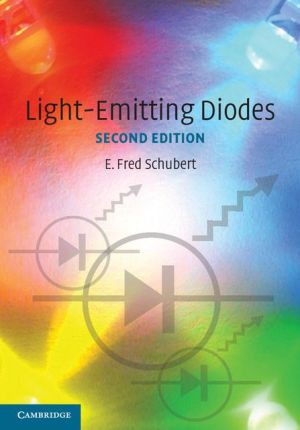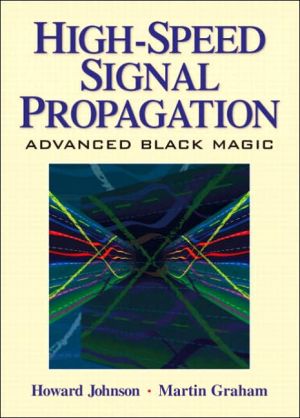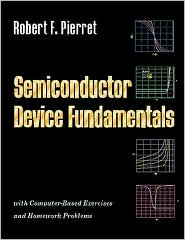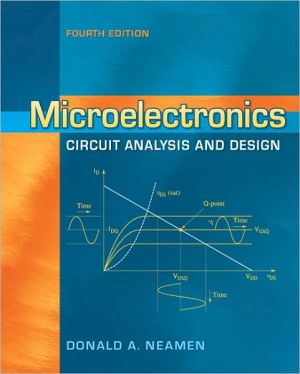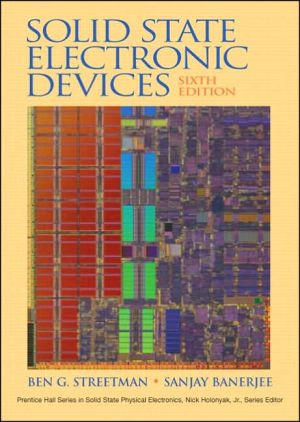Introduction to Light Emitting Diode Technology and Applications
Search in google:
Recent improvements in LED technology have made them as ubiquitous as cell phones. In fact, LEDs light up almost all cell phones screens. The technology’s myriad applications and low energy use have made it nearly impossible to get through daily chores without coming in contact with LEDs. Probable advances include increased ability of the technology to support more efficient lighting and enhanced communications. With balanced coverage of the basics and future developments, Introduction to Light Emitting Diode Technology and Applications takes you on a tour of the LED evolution.The book begins with a brief history of the effort to enable the device that generates light through modern organic LEDs and reviews the fundamentals and principles of light prior to a detailed explanation of how LEDs generate different colors. After forming this basic foundation, the book examines the key LEDs in lighting and communications. It then discusses the latest opportunities and advancements in high brightness (HB) LED technology, solid state lighting, and handheld electronic applications.As we approach a new decade the role of LEDs is literally set to explode, with organic light emitting diodes emerging as a leading next generation technology for electronic displays and lighting. Challenges still exist, including light extraction, luminosity, and white light generation, not to mention non-technical obstacles such as IP disputes and the lack of standards. This book provides a foundation for resolving these issues and developing new applications for LEDs in the promising general illumination market.
Preface xiiiAcknowledgments xvChapter 1 Introduction to LEDs 11.1 Basic Operation 11.1.1 The p-n Junction 11.1.1.1 No Applied Voltage 21.1.1.2 Applying Forward-Bias 21.1.1.3 Applying Reverse-Bias 31.1.2 LED Operation 41.1.2.1 Similarity to a Diode 41.1.2.2 Crossing the Barrier 41.1.3 LED Evolution 41.1.3.1 The First LED 51.1.3.2 Doping Materials 51.1.4 Voltage and Current Requirements 81.1.4.1 Manufacture of LEDs 81.1.4.2 Parallel and Series Operations 101.1.4.3 Current Limitation Considerations 121.2 Types, Functions, and Applications 181.2.1 Types of LEDs 181.2.1.1 Physical Characteristics 181.2.1.2 Colors 201.2.1.3 Flashing LEDs 211.2.1.4 LED Displays 221.2.2 Applications 231.2.2.1 Lighting 231.2.2.2 Other Applications 24Chapter 2 Fundamentals of Light 272.1 Properties of Light 272.1.1 Speed of Light 272.1.2 Photons 282.1.3 Planck's Constant 282.1.4 Frequency, Energy, and Light 292.1.5 Frequency and Wavelength 292.1.5.1 Frequency 302.1.5.2 Frequency of Waves 302.1.5.3 The Electromagnetic Spectrum 302.1.6 Spectral Power Distribution 312.1.6.1 Incandescent Light 322.1.6.2 Fluorescent Light 322.2 The CIE Color System 332.2.1 The Maxwell Triangle 332.2.1.1 Overview 332.2.1.2 Limitations 342.2.1.3 The Spectral Locus 342.2.2 CIE Theoretical Primaries 352.2.3 CIE Chromaticity Chart 352.3 LED Light 362.3.1 Comparing LEDs 372.3.2 White Light Creation Using LEDs 372.3.2.1 White Light Creation by Mixing Colors 372.3.2.2 White Light Creation Using Phosphor 372.3.3 Intensity of an LED 402.3.3.1 Candlepower 402.3.3.2 The Candela 412.3.4On-Axis Measurement 412.3.5 Theta One-Half Point 422.3.6 Current and Voltage Considerations 432.3.7 Lumens, Candelas, Millicandelas, and Other Terms 432.3.7.1 Lumens 442.3.7.2 Lumens per Watt and Lux 452.3.7.3 Watt Dissipation 452.3.7.4 Steradian 462.3.7.5 Luminous Energy 472.3.7.6 Illuminance 482.3.7.7 Lighting Efficiency 482.3.7.8 Color Temperature 492.3.7.9 Representative Lighting Color Temperature 492.3.8 LED White Light Creation 502.3.8.1 Wavelength Conversion 502.3.8.2 Color Mixing 512.3.8.3 Homoepitaxial ZnSe 51Chapter 3 LEDs Examined 533.1 P-N Junction Operation 533.1.1 Semiconductor Material 543.1.2 Basic Concepts of Atoms 543.1.2.1 Electrical Charge 553.1.2.2 Band Theory 553.1.3 Energy Bands 553.1.4 Conduction and Valence Bands of Conductors, Semiconductors, and Insulators 563.1.5 Equilibrium 573.1.5.1 Depletion Region Operation 583.1.5.2 Bias Effect 593.2 Diodes and LEDs 603.2.1 LED Operation 603.2.2 Color of the Light Emitted by an LED 613.2.3 Light Production 623.3 Organic Light-Emitting Diodes 633.3.1 Overview 633.3.2 Comparing Technologies 643.3.2.1 LCDs versus OLEDs 643.3.3 Types of Displays 653.3.3.1 PMOLED 653.3.3.2 AMOLED 663.3.4 Limitations of OLEDs 683.3.4.1 Lifetime of OLEDs 683.3.4.2 Fabrication and Ramp-Up Cost 693.3.5 OLED TV 693.3.6 Other Markets 713.4 LED Drivers 723.4.1 Rationale for Use 733.4.2 Using PWM 743.4.3 Driver Definition 753.4.4 Driver Connection 753.4.5 Types of Drivers 753.4.5.1 Boost LED Drivers 763.4.5.2 Step-Down LED Drivers 763.4.5.3 Buck-Boost LED Drivers 773.4.5.4 Multitopology Driver 773.4.5.5 Pump LED Driver 773.5 Summary 78Chapter 4 LEDs and Lighting 794.1 Rationale 804.1.1 Incandescent Lightbulbs 804.1.1.1 Economics of Use 814.1.2 Compact Fluorescent Lightbulbs 824.1.2.1 Cost Reduction 824.1.2.2 Utility Subsidization 834.1.2.3 The Federal 2007 Energy Bill 844.1.2.4 Economics of Use 844.1.2.5 Disposal Problems 854.1.3 LED Lightbulbs 864.1.3.1 Purchase Considerations 864.1.3.2 Quality of Light 884.2 High-Brightness (HB) LEDs 904.2.1 Overview 914.2.1.1 Metal-Organic Chemical-Vapor Deposition System 914.2.1.2 Initially Developed HB LEDs 924.2.1.3 Utilization 924.2.2 Fabrication Forms 934.2.3 ac versus dc Power 934.2.3.1 Seoul Semiconductors 944.2.3.2 Lynk Labs 954.2.4 HB-LED Output 964.2.5 Energy Star Program Developments 974.2.6 Outdoor Lighting Developments 984.2.7 Cities Discovering LEDs 994.2.8 Lighting Science Group 1004.2.9 OSRAM Opto Semiconductors 101Chapter 5 LEDs in Communications 1035.1 Remote Control and Infrared LEDs 1035.1.1 Overview 1045.1.2 The Infrared Region 1045.1.2.1 Rationale for Use 1045.2.2.2 Frequency and Wavelength 1045.1.3 Evolution in the Use of IR 1065.1.4 IR Remote Operation: IR Port 1065.1.5 Types of IR Devices 1075.1.5.1 Emitters 1075.1.5.2 Detector 1075.1.5.3 Photo Interrupter 1075.1.5.4 Photo Reflector 1085.1.5.5 IR Transceiver 1085.1.6 TV Remote Control 1095.1.7 The IR Signal 1095.1.7.1 ASK Modulation 1095.1.7.2 FSK Modulation 1105.1.8 Interference 1105.1.9 Inside a TV Remote Control 1115.1.9.1 Operation 1115.1.9.2 Printed Circuit Board 1125.1.10 Remote Control LEDs 1135.1.10.1 Wavelengths and Fabrication 1135.1.10.2 Technical Details 1135.1.10.3 Cost 1145.1.11 IR Detection with IR Photodiode 1145.1.11.1 Overview 1145.1.11.2 Modes 1155.1.11.3 Composition 1165.1.11.4 Packaging 1165.1.11.5 Operation 1175.1.12 Selecting a Resistor 1175.1.12.1 Limiting the Value of the Resistor 1185.1.12.2 Maximum Resistance 1185.2 Ethernet Networking 1195.2.1 Fiber-Optic Cable 1205.2.1.1 Decibels Power Measurements 1205.2.1.2 Single versus Dual Cables 1215.2.1.3 Cable Composition 1225.2.1.4 Types of Fiber Cable 1225.2.1.5 Fiber and Wavelength 1235.2.2 FOIRL and 10BASE-F 1245.2.2.1 Overview 1255.2.2.2 Optical Transceiver 1255.2.2.3 The Fiber Hub 1255.2.2.4 Fiber Adapter 1265.2.2.5 Wire and Fiber Distance Limitations 1265.2.3 10BASE-F 1275.2.3.1 10BASE-FL 1275.2.3.2 10BASE-FB 1295.2.3.3 10BASE-FP 1295.2.4 Optical Media Support 1295.2.5 Fast Ethernet 1305.2.5.1 100BASE-FX 1305.2.5.2 100BASE-SX 1305.2.6 Gigabit Ethernet 131Chapter 6 Comparing LEDs and Laser Diodes 1336.1 The Laser Diode 1336.1.1 Emission of Coherent Light by Laser Diodes 1346.1.1.1 The Quantum Process 1346.1.1.2 Use of Mirrors 1366.1.2 Reviewing LED and Laser Diode Operations 1376.1.3 Evolution of Laser Diodes 1376.1.4 Types of Laser Diodes 1386.1.4.1 Edge-Emitting Laser Diode 1386.1.4.2 Double Heterostructure Laser 1406.1.4.3 Quantum Well Laser 1406.1.4.4 Vertical-Cavity Surface-Emitting Laser (VCSEL) 1416.1.4.5 Trade-offs between Various Laser Diodes 1436.1.4.6 Vertical External Cavity Surface-Emitting Laser 1436.2 Comparing Laser Diodes and LEDs 1436.2.1 Comparing Operational Characteristics 1436.2.2 Performance Characteristics 1446.2.2.1 Speed 1446.2.2.2 Peak Wavelength 1456.2.2.3 Power Coupling 1456.2.2.4 Spectral Width 1456.2.2.5 Emission Pattern 1456.2.2.6 Linearity 1466.2.2.7 Luminous Efficacy 1476.2.2.8 Drivers 1476.2.3 Safety 1486.2.4 Applications 1486.2.4.1 Commercial Applications 1496.2.4.2 Data Communications 1506.2.4.3 Dental Applications 1516.2.4.4 Illumination Application 1516.2.4.5 Medical Application 1516.2.4.6 Military Applications 151Chapter 7 The Evolving LED 1537.1 Lighting 1537.1.1 Increasing LED Density 1547.1.2 Light Output per LED 1547.2 Communications 1577.3 Organic LEDs 1587.3.1 Display Utilization 1587.3.2 Advantages 1587.3.3 Current Deficiencies 1597.3.4 Lighting 160Index 161
